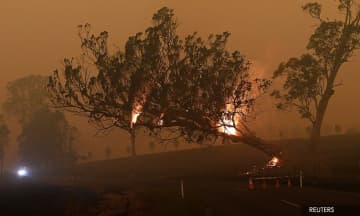
Australian authorities warn bushfire reprieve is just temporary
Australian authorities today urged residents along the east coast to be ready to evacuate despite a … (more…)

Australian authorities today urged residents along the east coast to be ready to evacuate despite a … (more…)
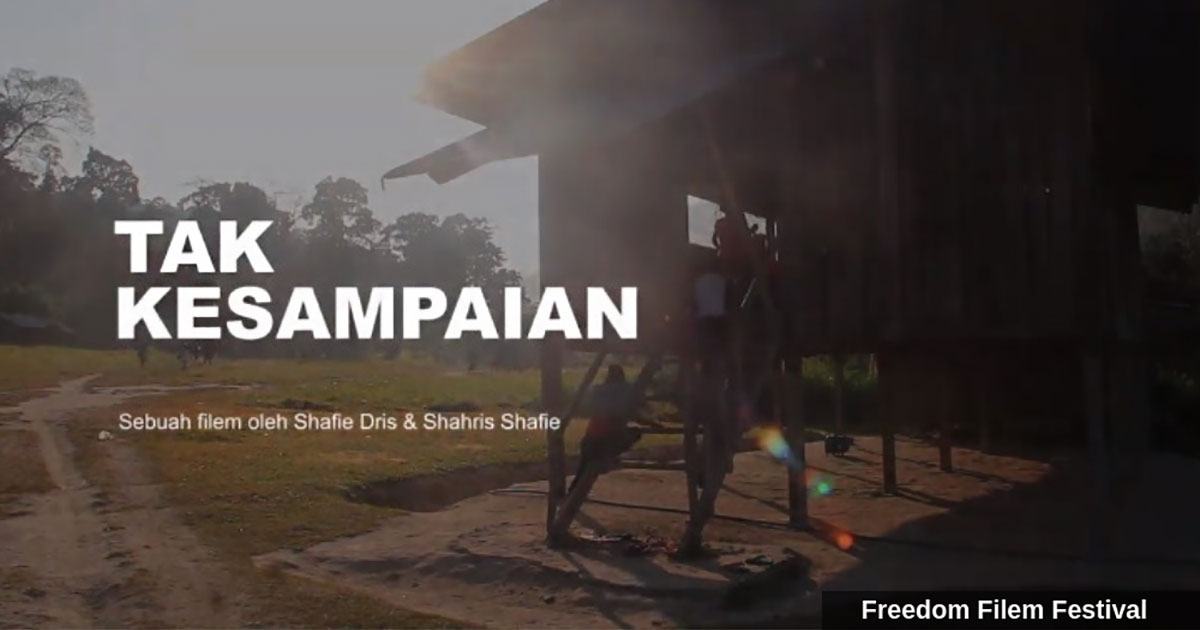
In conjunction with Human Rights Day that falls on the 10th of December, KiniTV is featuring seven original documentaries focusing on Malaysian minorities throughout the weekends in December. The screening is taking place on YouTube, Facebook, Dailymotion and Instagram.
Of the seven documentaries, three of them were produced in a joint effort between KiniTV and the Freedom Film Network. The first is Tak Kesampaian, directed by aboriginal amateur director Shafie Dris. The second is The Story of Kam Agong while the third is Sevan Doraisamy’s POCA Boy.
These seven documentaries focus on the rights of the people in the rural areas of Malaysia and also the minority groups of the country.
The following are the dates and times of the broadcasts.
| 8:00PM, 8 December | The Endangered Gentle Giants of the Borneo |
| 8:00PM, 9 December | The Story of Tijah Chopil |
| 8:00PM, 15 December | POCA Boy |
| 8:00PM, 16 December | The Anatomy of An Abduction |
| 8:00PM, 22 December | Tak Kesampaian |
| 8:00PM, 23 December | Operasi Lalang & After |
| 8:00PM, 30 December | The Story of Kam Agong |
Below you can find a brief summary of the documentaries that will be screened.
1.
| Running Time | 10min |
| Directed by | KiniTV Original |
| Language | Chinese, Bahasa Malaysia |
| Subtitles in | Chinese, Bahasa Malaysia, English |
| Airing on | 30 December 2018 |

Synopsis: The rainforests of Borneo are home to many flora and fauna including the little-known Pygmy elephant. Not many people know that Malaysia is home to several of these elephants, the smallest species of elephants in the world. They are known to be smaller and more temperamental compared to the other species in Asia. However, their numbers are dwindling as over the years as a result of irresponsible human activities.
2.
| Running Time | 10min |
| Directed by | KiniTV |
| Language | Bahasa Malaysia |
| Subtitles in | English |
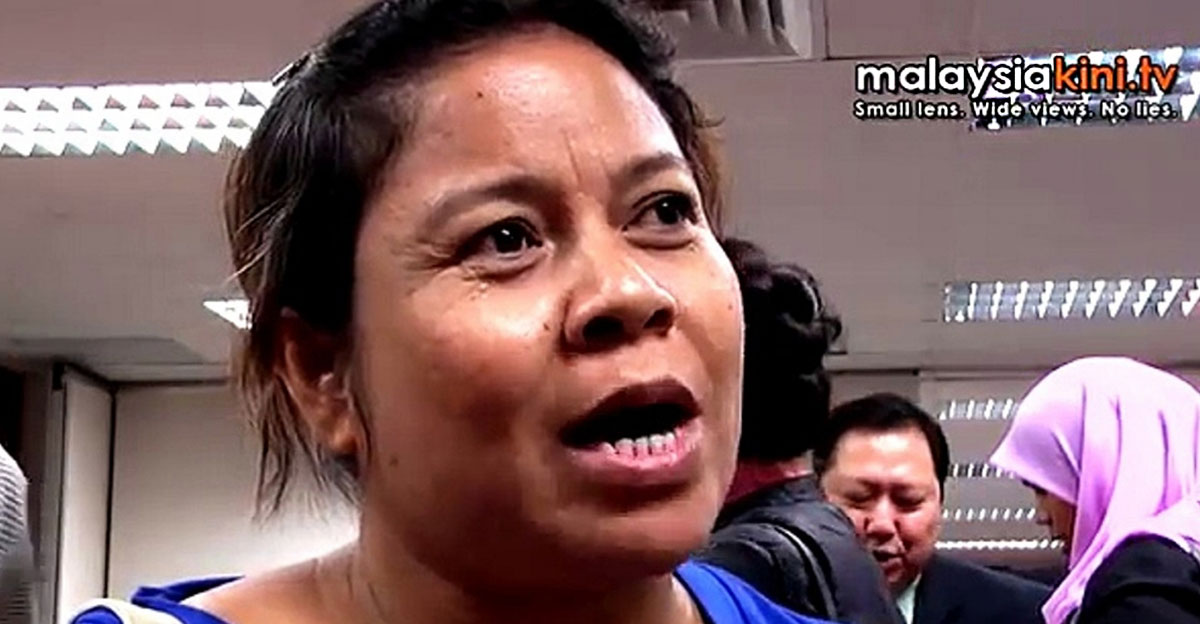
Synopsis: Armed with only a high school education, Tijah Chopil is an indigenous Semai from Peninsular Malaysia. As the ethnic group with the longest history in West Malaysia, seeing the discrimination and injustice that her people are subject to made her pick up activism from the age of 17. This is the story of how she joined the fight for the rights of the indigenous people of Malaysia.
3.
| Running Time | 10min |
| Directed by | Sevan Doraisamy |
| Language | English |
| Subtitles in | None |
| Airing on | 23 December 2018 |
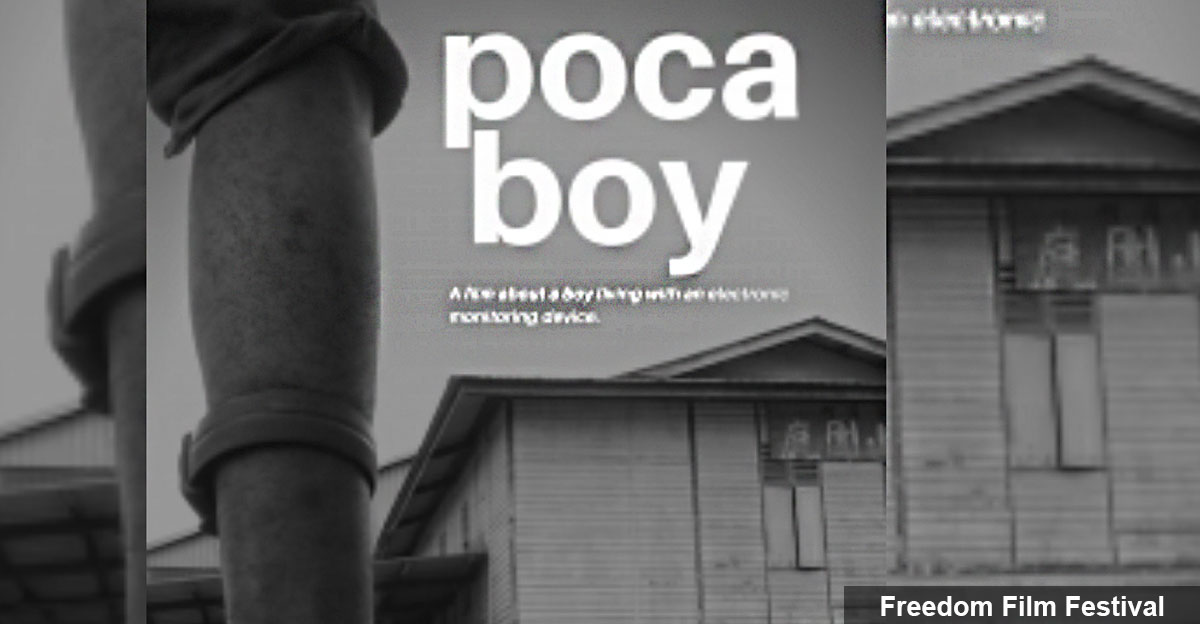
Synopsis: Can you imagine what it is like to be 16 years old and not be allowed to go further than 10KM from your home for an indefinite period of time? This is the true story of Ang, a boy who has been under house arrest for more than a year and who walks around with an electronic monitoring device fitted to his leg.
4.
| Running Time | 23min |
| Directed by | KiniTV |
| Language | English |
| Subtitles in | English |
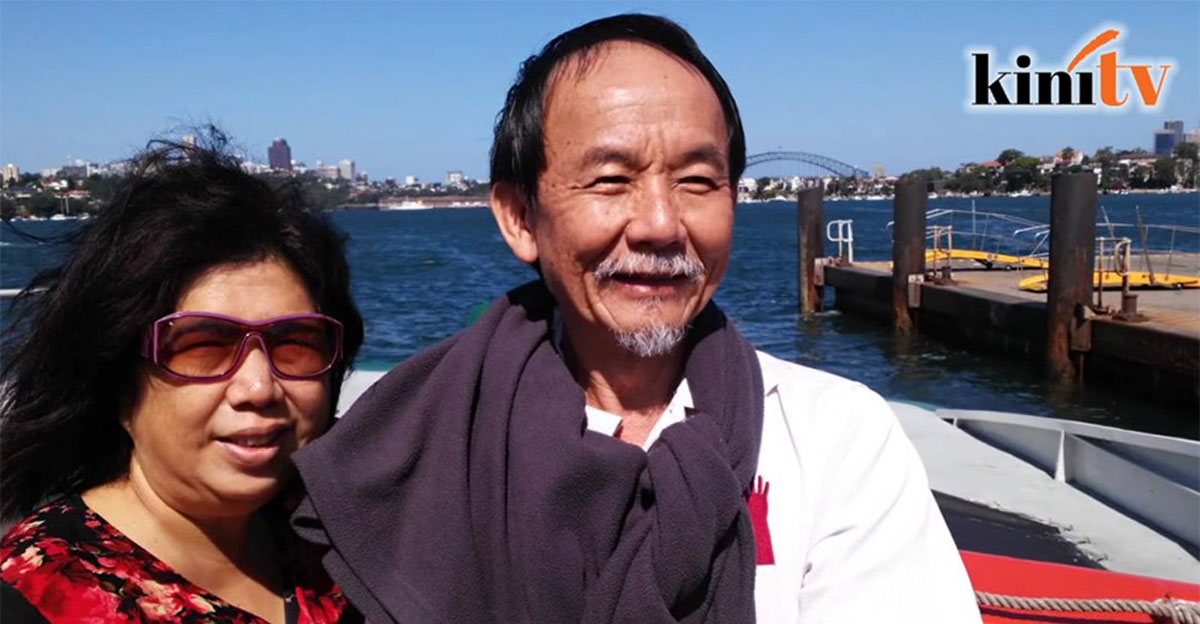
Synopsis: On the 13th of February 2017, Pastor Raymond Koh was swiftly abducted by 15 masked individuals in just 40 seconds. One year later and the police have not managed to solve the case, prompting questions into the possibility of this mystery being a case of enforced disappearance.
(This documentary was first released on February 13, 2018)
5.
| Running Time | 23min |
| Directed by | Shafie Dris |
| Language | English |
| Subtitles in | English |
| Airing on | 16 December 2018 |

Synopsis: Despite poverty and socio-cultural hindrances, some Orang Asli youths do rise above and complete their secondary education. Nevertheless, their struggle doesn’t pay off. Despite achieving good results in their Form Five examinations, they had received rejections from higher education institutions. The film explores the responses from the community and educators on the factors leading to this issue.
6.
| Running Time | 31min |
| Directed by | Dave Anthony |
| Language | English |
| Subtitles in | English |
| Airing on | 22 December 2018 |

Synopsis: After witnessing his wife taken away into preventive detention during the 1987 security crackdown known as Operation Lalang, filmmaker Dave Anthony embarked on producing a film documenting the ordeal as he put the crackdown on trial in search for answers. However, the fear of authoritarian politics kept the tape unpublished for 30 years. In 2017, on the 30th anniversary of the crackdown, KiniTV obtained the rights to publish the video. (This documentary was first released on November 27, 2017)
7.
| Running Time | 30min |
| Directed by | Lawrence |
| Language | Bahasa Malaysia, Lun Bawang |
| Subtitles in | English, Bahasa Malaysia |
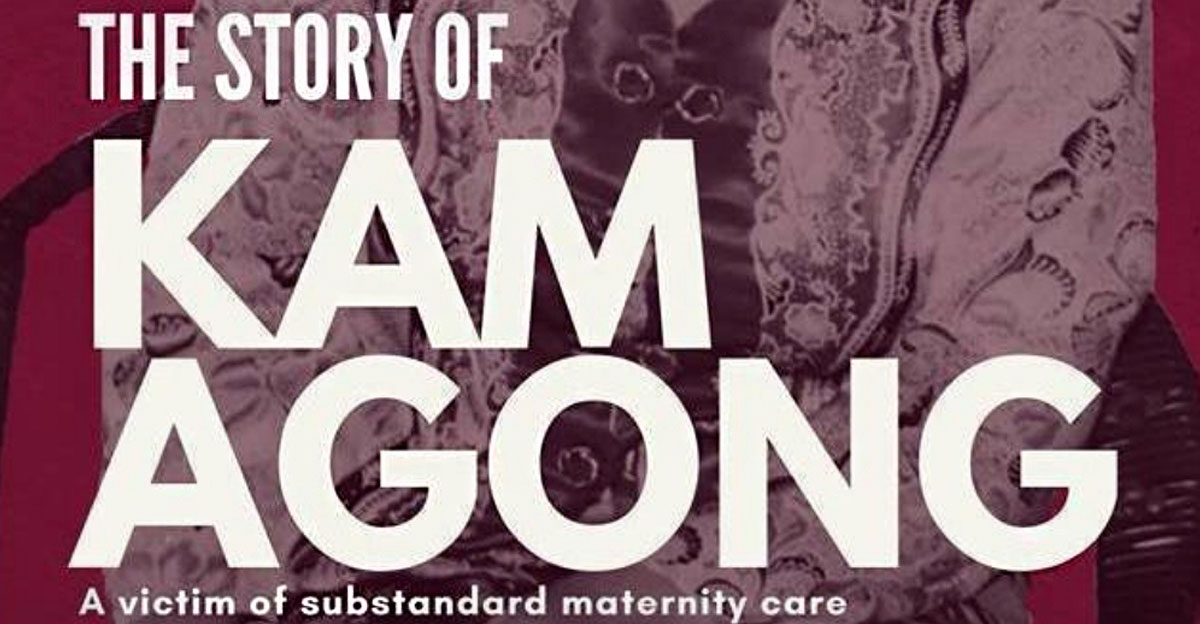
Synopsis: In 2002, a Lun Bawang woman named Kam Agong living in Sarawak succumbed to excessive blood loss after delivering her eighth son. Over the next six years the family embarked on a tireless legal battle, seeking justice for Kam. The court finally found the local clinic doctor and the Malaysian government guilty of clinical malpractice and sentenced them to pay RM50,000. Sixteen years later, Kam Agong’s daughter Agnes brings her youngest brother back to their hometown to honor her memory. (This film is produced in a collaboration between KiniTV and the Freedom Film Network.)

NEW DELHI – India’s southern state of Kerala has been hit by the worst floods in nearly a century. Now that the floodwaters are receding, a peculiar debate has emerged over whether India should accept foreign aid to support reconstruction.
At the peak of the floods, the Indian government allocated money from the National Disaster Response Fund for immediate relief. But it was the public that really stepped up, with an outpouring of contributions to the Kerala government’s disaster relief fund that amounted to more than twice the funds so far provided by the national authorities.
In fact, the total additional assistance the government has provided – $90 million (with promises of an unspecified additional amount) – amounts to less than half of what the state government was requesting for immediate relief. It does not even begin to cover long-term reconstruction costs, estimated at over 50 times that figure.
The floods, which displaced a million people, left Kerala with 39 collapsed bridges, some 6,000 miles of ruined roads, significant agricultural losses, and more than 50,000 homes either damaged or destroyed. Rebuilding all that infrastructure, which took decades to construct the first time around, will be a herculean task.
Despite all of this, India’s government, led by Prime Minister Narendra Modi and his Bharatiya Janata Party (BJP), have refused to accept outside help. That stance first became apparent as the crisis was unfolding, when the United Arab Emirates – which is home to some two million Keralites – reportedly offered assistance totaling $100 million.
Modi thanked the UAE’s leader, Sheikh Mohammed bin Rashid Al Maktoum, on Twitter. Then his government – via BJP spokesmen, rather than government officials – let the media know that it would not be taking the UAE grant.
On August 21, Thailand’s ambassador to India tweeted: “Informally informed with regret that [the] Government of India is not accepting overseas donations for Kerala flood relief.” Offers from Qatar and the Maldives of $5 million and $50,000, respectively, are thus also likely to be rejected. Indian missions abroad have been instructed to turn down offers of assistance.
BJP leaders insisted that this stance is based on the 2004 decision of then-Prime Minister Manmohan Singh’s United Progressive Alliance government not to accept foreign aid following the Indian Ocean tsunami. But the tsunami had done far less damage than the Kerala floods have, and national resources could fully cover the estimated costs of rebuilding.
Moreover, any precedent established by that 2004 decision was superseded by the National Disaster Management Plan, issued by Modi’s own government in 2016. Paragraph 9.2 of the plan states that the government does not issue any appeal for foreign assistance in the wake of a disaster, but can accept such assistance, if another national government offers it voluntarily, “as a goodwill gesture in solidarity with the disaster victims.” This means that it would have been entirely permissible for the government to accept the UAE’s help.
So why did the BJP reject the offer? After announcing the decision to reject the UAE’s offer, the party’s spokesmen lost no time in invoking national pride: India, now a net donor of aid to poor countries, could take care of its own.
If Modi’s government believes that it has adequate funds to meet Kerala’s needs, it owes the state’s people an explanation to as to why such a small amount has been allocated. But there is little reason to expect any such thing of the cash-strapped Modi government. When Cyclone Ockhi struck coastal areas of Kerala last December, the central government provided just 2% of the aid the state government requested.
The rejection of foreign assistance is not even a fundamental BJP policy. After the 2001 Bhuj Earthquake in Gujarat – where Modi himself was Chief Minister – the BJP-led central government accepted international assistance. The total funds raised by United Nations bodies – such as the UN Development Programme, the World Health Organization, UNICEF, the International Labour Organization, and the Office for the Coordination of Humanitarian Affairs – exceeded $42 million. A total of $1.7 billion was then pledged at a reconstruction conference, and Bhuj was rebuilt.
One could ask whether aid from international organizations should be regarded as “foreign” by a UN member in good standing. But even aid from other countries is an entirely normal feature of international relations, especially when major disasters strike and an “all for one, one for all” spirit takes hold.
India has voluntarily provided help when its neighbors have been similarly afflicted, such as after earthquakes in Nepal, Pakistan, and Iran, and floods in Bangladesh and Myanmar. Even the United States accepted foreign aid after Hurricane Katrina struck New Orleans and the Gulf Coast in August 2005, with India providing $5 million. Why shouldn’t others similarly extend a helping hand to Indians in distress?
India is a proud country that prefers to rely on its own resources. But when our resources are nowhere near sufficient to meet the needs of our people – who are suffering in the wake of a devastating disaster – it is both churlish and irresponsible to reject aid from those who can and want to provide it. No policy of national pride can justify callousness towards our own distressed citizens.
By all means, do not go abroad with a begging bowl. But when your friendly neighbor knocks on your door and offers you the cup of sugar you need to finish a recipe, you don’t turn him away. There is no shame in accepting aid from friends whom we would help if the tables were turned. For the sake of the people of Kerala, the BJP government must recognize this and revise its disaster-aid policy.
Copyright: Project Syndicate, 2018.
www.project-syndicate.org

Sometimes, we just need a reason to go out and have some fun with our fellow Malaysians. The Malaysiaku Celebrations involve one big street carnival held in Bangsar, with an overwhelming array of food stalls, talks, poetry recitals, book signings, and lots of musical performances – basically, there is something for everyone.
The Malaysiaku Celebrations started in 2010, and it was also held in the years 2011, 2013 and 2015. The organiser for this community project is Edward Soo, a lawyer by profession who is part owner of the Bangkung Row Restaurants (Opus, Cava, Leonardo’s, Lucky Bo, Bobo).

Jalan Bangkung Street at Malaysiaku 2010.
In this year of 2018, Soo is bringing back the Malaysiaku Celebrations, in part to rejoice the arrival of Malaysia Baru after #GE14, but mostly to celebrate our rich and diverse Malaysian culture, and to promote the celebration of Malaysia Day on 16th September.
“We want to celebrate all that is good about Malaysia – our culture and food. And in that way, it will remind ourselves of why we are still here fighting for a better Malaysia,” he said.

Peter Yew and Edward Soo (right), organizers of the Lion Dance event at Malaysiaku 2013.
The reason Soo wants to celebrate Malaysia Day and not Merdeka Day is that Malaysia was formed in 1963, and Sabah and Sarawak have always been big contributors to Malaysia in terms of resources. Yet, those of us in West Malaysia do often neglect to think about our fellow countrymen in East Malaysia. Ed Soo said he would want them (Sabahans and Sarawakians) to feel a part of Malaysia.

Sabahan dancers at Malaysiaku 2013.

Kuda Kepang dance from Johor Malaysiaku 2013.
Soo also wants to build more community spirit through these celebrations.
“I hope this will catch on like a trend and spread all over. Everywhere, every community can have this celebration, whether it’s small or big. Get to know your community and your neighbours better,” he added.
The Bangsar community certainly knows how to have fun. And what better way to showcase the best of Malaysia than through our lip-smacking good food?
Hence, you can look forward to a street carnival atmosphere filled with 70 food stalls along Jalan Bangkung offering a plethora of authentic food from all over Malaysia. Sample local favourites such as Kelantan Nasi Kerabu, Sarawakian Laksa, Tuak, Indian Vaday, Penang Rojak, Satay, Nasi Lemak Bobo, Johor Laksa, Nyonya Kueh and many more delightful treats to satisfy your palate.
For those with a sweet tooth, look out for the Depressed Cake Shop booth inside Lucky Boo. This global community initiative promotes awareness about mental health issues by baking cakes which are grey in colour. Funds raised from the sale of these cakes will be donated to Angsana Care.

Wayang Kulit performance at Malaysiaku 2010.
The food is not the sole highlight of the day, as there are also art and craft booths set up by various indigenous and NGO groups, talks/forums, a stand-up comedy act and book signings to be held indoors at Bobo Piano Lounge, Leonardo’s Dining Room and OPUS throughout the day.
The topics of the two talks scheduled at Bobo Piano Lounge are Key Economic and Political Reforms for Malaysia Baharu by Professor Dato’ Woo Wing Thye and Dr. Wong Chin Huat, and Malaysia 2.0: Pressing the reset button by Dato’ Ambiga Sreenevasan and YB Fahmi Fadzil.
The standup comedy act in Malay is called Malaysia Baharu Boboleh, featuring Hishamuddin Rais, Shashic, KC Nazari and Abe Latte, and hosted by Ayim Razak and Filzah Awok. This is the only event to have a RM30 cover charge at the door and it is open to those above 18 years old only.

Talk “Descendants of the Founding Fathers” organized by IDEAS Malaysiaku 2013.
Over at Leonardo’s Dining Room, there will be another talk presented by Five Arts Centre titled Dibuang (Dalam) Negeri: Who and What is Excluded from Malaysia Baharu? This talk has a unique format which requires audience participation, and it is curiously called the Fishbowl Conversation.
Poetry lovers should not miss Malaysian Poetry Recital: A Nation in Verse. It is presented by an eclectic lineup of home-grown Malaysian poets and storytellers, navigating through these puzzling times of our 55-year-old country using poetry.
At the same time, there will be book signings over at OPUS with local authors Lina Latif, Adilin Arifin, Saidah Rastam, Bernice Chauly, and Benz Ali. Fans of iconic political cartoonist Zunar can also look forward to his interview with Umapagan from BFM Radio.
Last but not least, there will be a huge stage set up in the car park for non-stop song and dance performances from 4 pm to 10 pm. Malaysian folk singer Azmyl Yunor and Ushera will both be performing, as will Saidah Rastam and friends.

We are Malaysia singers at Malaysiaku 2011.
Join in the fun singing patriotic songs to bring back those nostalgic feelings of yesteryears gone by, sway to the music of Nada Bayu, a Sabahan Band, and dance to the pulsating beats of Bhangra music to cap off the night. There will also be welcome speeches given by Ed Soo and YB Fahmi Fadzil, MP for Lembah Pantai, and a Malaysia Birthday Cake Cutting Ceremony at 6.30pm.
So, bring your dancing shoes and enjoy the Malaysiaku Celebrations at Jalan Bangkung with your family and friends this year if you have nothing else planned. You can use Grab to get to Bangsar and minimise the parking problem on the day due to the large crowds expected.
Use Grab promo code: GRABSP18 which entitles you to RM5 off two rides (max 1,000 promo codes) to and from Jalan Bangkung on Malaysia Day 16th September 2018.
For those who prefer to drive, you can park at BSC or BV/Jolly Green Giant or better still, take the train to the Bangsar LRT station and take a Grab over to Jalan Bangkung.
For more information, go to https://www.facebook.com/MalaysiakuCelebrations/
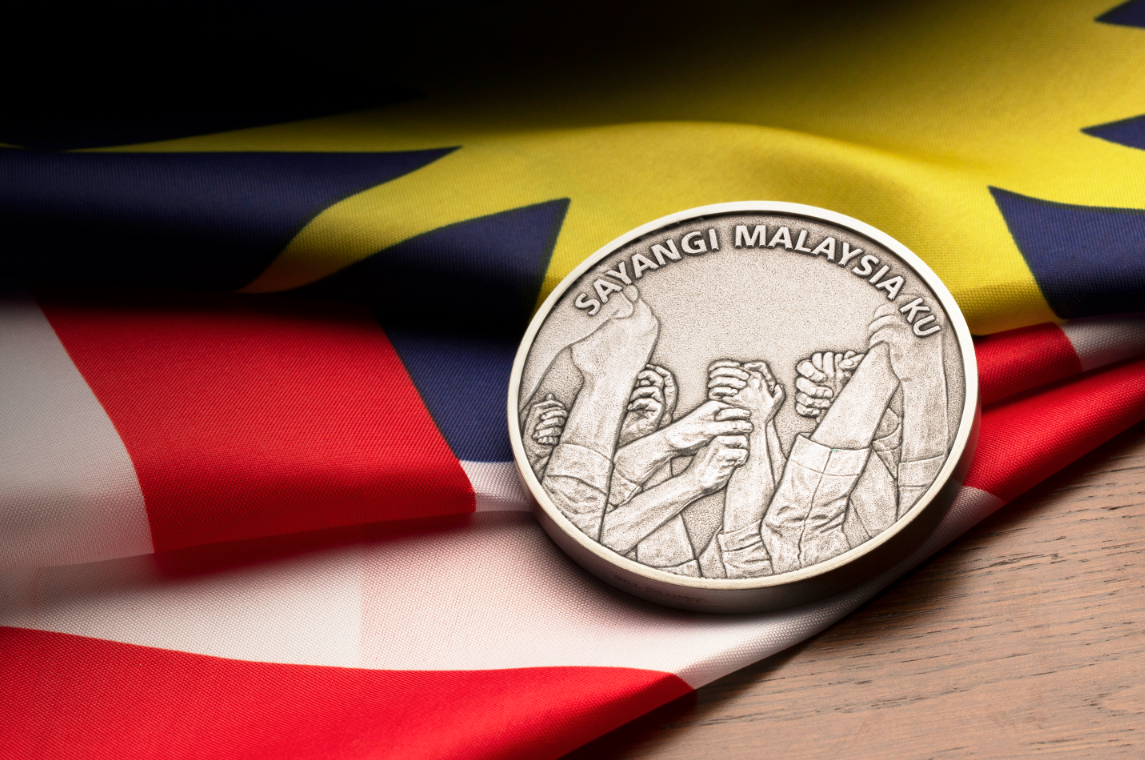
According to Tien Yue Chen, the Executive Director at Royal Selangor, the idea for this medallion came about after witnessing the historic day of GE14. It was such a big change for the country and so many people felt that they were involved in this process of change.
“We felt that we should come up with something to commemorate this event – this Malaysia Baru sense of ‘people power’. Royal Selangor has always been apolitical and we didn’t want to make it about one coalition or one party against another. We thought about it and it is really quite a big occasion, so it would be nice to have something to mark what had happened. So we said, let’s celebrate Malaysian people getting together, being heard and making a change. Let’s make something and now the question was what should we make?”
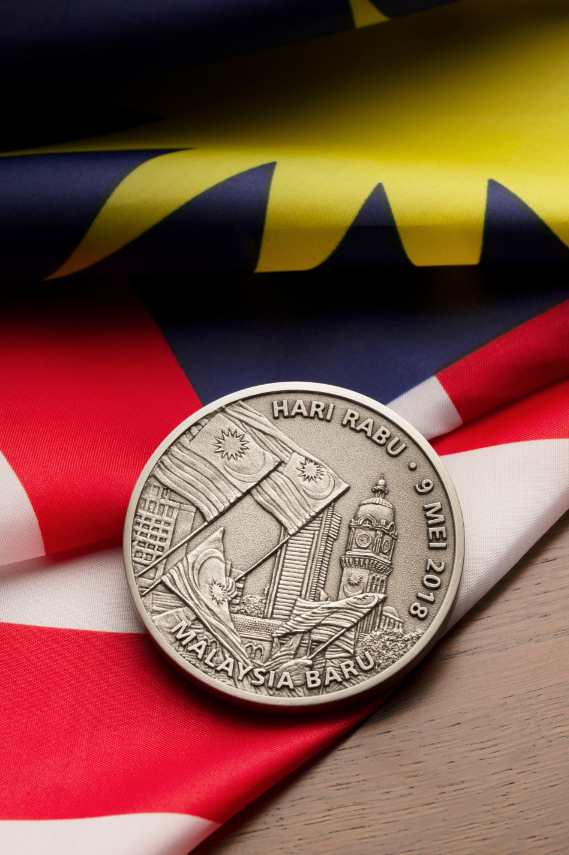
One side of the 2.5″ medallion conveys national pride and unity, with key iconic scenes of Malaysian flags waving in front of the Sultan Abdul Samad building and the birth date of Malaysia Baru, while the other side features hands joining forces symbolising the power of the people and democracy. The show of unity is in line with this year’s Merdeka theme, “Sayangi Malaysiaku”.
“The medallion has some sort of weight to it. It feels solid in your hand, and it is something that you can keep and remember what had happened on 9th May 2018,” Chen explained.
This special edition medallion, which retails for RM 125, will be available for a limited time only and 20% of the sales of the medallion will be donated to Tabung Harapan. The Malaysia Baru medallions have been flying off the shelves already and many Royal Selangor stores are out of stock currently.
“So far, the response has been really good with people coming to our stores and spreading the word to their friends. In fact, we have a bit of a supply issue right now because we have trouble shipping out with the great demand. I suggest if people want to get it, to just give us a call, quickly order it and we’ll try to get the piece to them as soon as possible when supplies come in.”
Chen further explained that they were selling until the end of September. The quantities to be made depends on what the demand is going to be. They hope to sell at least 5000 pieces because that will help raise at least RM100,000 for Tabung Harapan.
When asked why Royal Selangor is donating 20% of the sales from the Malaysia Baru medallion to Tabung Harapan, Chen replied, “I think Tabung Harapan is a way for people to feel that they can be part of the whole change. Of course, in terms of amount, it’s a relative thing whether people feel it will be a meaningful amount that’s to be raised by Tabung Harapan. But it gives everyone a chance to be part of the process. Everyone can be involved in this new Malaysia. And that’s why we thought having the medallion proceeds go to Tabung Harapan would be giving people a chance to contribute to this change.”
You can order your medallion at royalselangor.com and at all Royal Selangor retail stores in Malaysia. If you’re overseas and want to get this medallion, we suggest that you order it online. There’s a minimum spend for free delivery, so depending on your location, you can buy 3 or 4 medallions for your family and friends and have it delivered to you for free.

Rare earth mining and refining has a unenviable association with serious environmental problems. After the tragedy in Bukit Merah, caused by the lax radioactive waste management by rare earth refiner Asian Rare Earth Sdn Bhd, the Malaysian public is understandably very concerned and demands assurance that radioactive wastes from the Lynas Advanced Materials Plant (LAMP) in Gebeng, Kuantan is properly disposed of.
Lynas has repeatedly maintained it “has successfully met all licence conditions relating to operations and environmental performance” and that it is “strongly committed to open and transparent communication with all our stakeholders”.
For starters, after more than five years in operation, Lynas has yet to identify the location of a permanent deposit facility (PDF) for the storage of its radioactive wastes. Neither has there been any public notifications, publications or announcements by the Atomic Energy Licensing Board of Malaysia (AELB) on the issue. Note that the International Atomic Energy Agency (IAEA) in its 2011 report had recommended that a PDF be identified before an operating licence is awarded to LAMP.
Malaysia’s Land Code forbids the usage of any land as PDF of radioactive wastes. As AELB should be keenly aware of that, this indicates the regulator’s acceptance of Lynas’ bold claims that it could safely recycle all its wastes, including the radioactive water leached purification (WLP) waste. Given the nature of radioactive wastes, is that even possible?
True Lynas has held exhibitions, organised some community activities, and opened its doors for visits from the press and stakeholders. But many questions remain unanswered.
There has been repeated calls for Lynas to have a more in-depth dialogue with stakeholders, such as via a public forum, to address issues of concern, especially its radioactive waste management. Lynas CEO Amanda Lacaze had seemed open to the idea of a public forum after the International Trade and Industry Minister suggested it in 2016, giving the impression it plans to conduct such a forum, “preferably before year-end”.
When the issue of a public forum was pursued again, Lacaze pointed to the company’s website: “Information on our residue management is available in the following sections of our website www.lynascorp.com — Commitments & Responsibilities / Residue Management, and News / Media Briefing at Community Event.” (Note: the website’s layout and sections have changed since.)

Notably, the website does not state the volume of wastes Lynas produces. Formulation of its soil enhancer, called CondiSoil, could not be found either.
In its Radioactive Waste Management Plan (RWMP) submitted on 30 December 2011, Lynas had proposed to recycle all its solid wastes into industrial by-products. It had shared an impressive timeline of R&D and commercialisation over 2012-2015. Key products/applications included plaster board and cement manufacturing, road base, fertilizers, and soil remediation. As CondiSoil now seems to be the sole residue-derived product on its plate, Lynas needs to share more on how this product helps it to recycle its radioactive wastes.
If Lynas is being seen a villain, it has no one to blame but itself. Turning a deaf ear to the repeated requests for a dialogue from the community LAMP is operating in is a demonstration of haughty arrogance at best, or worse, hiding something that cannot stand up to exposure. Given the lack of disclosure and details on CondiSoil, Lynas looks suspiciously like trying to pull wool over the public’s eyes.

Yes legally, Lynas has complied with all the required rules and regulations, for now. AELB concurs.
But morally, Lynas has failed us.
Unless Lynas can assure us to the contrary, it will remain accused of processing rare earths in Malaysia — some 4,000 nautical miles from where they are mined, no less — only so that it can leave us the toxic wastes because its own country does not want them while being handsomely compensated (e.g. 12-year tax holiday) by our own government for the deed! Indeed, the distrust for Lynas has made the people to also distrust the authorities charged with protecting us from radioactive harm. They failed us re Bukit Merah; they could just fail us again — that it the fear.

For more articles, please log in to
SMSL Facebook: Pahang Don’t Need “Hazardous” Project
and SMSL Blogspot: Save Malaysia Stop Lynas